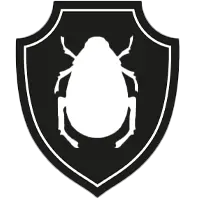I know how unsettling it can be to see wasps buzzing around your yard.
As a pest control specialist, I’ve seen countless homeowners struggle with these unwelcome guests. Wasps not only pose a risk of painful stings but can also disrupt your peaceful outdoor moments.
In this article, I’ll share effective strategies to keep these winged invaders at bay. By the end, you’ll have a clear roadmap to ensure a safer, wasp-free yard for you and your loved ones.
Let’s dive in and reclaim your outdoor space!
How to prevent wasps in yard
Wasps can be quite a menace, especially during certain times of the year. While they play a role in the ecosystem, it’s understandable that you’d want to keep them away from your living spaces.
Here, I’ll guide you through some tried-and-true methods to deter these pesky insects from making your yard their home.
Choosing the right plants that deter wasps
Certain plants naturally repel wasps due to their scent or other properties. Consider planting marigolds, mint, or eucalyptus. These not only add beauty to your garden but also act as a natural wasp deterrent.
Regular yard maintenance and cleanliness
A clean yard is less attractive to wasps. Regularly mow your lawn, trim bushes, and remove any dead vegetation. Ensure that there’s no stagnant water, as it can be a breeding ground for insects. A well-maintained yard is less inviting for wasps to build their nests.
Using natural repellents and deterrents
There are several natural solutions that can deter wasps. Essential oils like peppermint or lemon can be mixed with water and sprayed around your yard. Wasps dislike these scents, making them effective repellents. Additionally, a mixture of water and dish soap sprayed directly on nests can help in eliminating them.
Or you can use an outdoor wasp trap like this one.
Properly sealing and disposing of food and trash
Wasps are often attracted to food, especially sugary substances. When you’re dining outdoors, ensure food is covered and any spills are cleaned immediately. Seal your trash cans tightly and regularly clean them to prevent wasps from being drawn to the scent.
In the next section, we’ll delve deeper into understanding our winged adversaries by exploring the lifecycle of a wasp. Knowing your enemy is half the battle won!
The lifecycle of a wasp: Knowing your enemy
It’s often said that knowledge is power. By understanding the lifecycle of a wasp, you can better anticipate their habits and behaviors, giving you an edge in your efforts to keep them at bay. Let’s delve into the fascinating journey of a wasp, from its early stages to its adult life.
From egg to adult: The stages of a wasp’s life
Wasps begin their life as tiny eggs laid by the queen in the spring. These eggs hatch into larvae, which are fed by worker wasps. After a few weeks, the larvae spin cocoons and transform into pupae. Within these protective shells, they undergo a metamorphosis, emerging as adult wasps ready to continue the cycle.
Why wasps are attracted to certain areas
Wasps are not just randomly buzzing around your yard; they have specific reasons for being there. They’re often in search of food, which can range from sugary substances to other insects. Additionally, they seek out places that provide shelter and are suitable for building nests, such as eaves, attics, or even underground. Understanding these attractions can help you make your yard less appealing to them.
In our next section, we’ll discuss the numerous benefits of maintaining a wasp-free yard. From ensuring safety to enhancing your outdoor experiences, there’s a lot to gain from keeping these stingers away!
Benefits of a wasp-free yard
While wasps play a crucial role in our ecosystem, their presence in our personal spaces can be quite unsettling. Ensuring your yard is free from these buzzing creatures not only brings peace of mind but also offers a range of other benefits. Let’s explore why it’s worth the effort to maintain a wasp-free environment.
Enhanced safety for family and pets
Wasps can be aggressive, especially when they feel threatened. Their stings can be painful and, for some individuals, even life-threatening due to allergic reactions. By keeping wasps at bay, you ensure that your family, guests, and pets can enjoy the outdoors without the fear of being stung.
Enjoying outdoor activities without disruptions
There’s nothing like a relaxing afternoon in the yard, perhaps with a book or a barbecue. Wasps can quickly turn these serene moments into stressful ones. A yard free from wasps means uninterrupted picnics, playtimes, and other outdoor activities.
Protecting your home’s structure and garden
Wasps can build nests in various parts of your home, including wall cavities and roof spaces. Over time, this can lead to structural damage. Additionally, some wasp species are known to chew wood to build their nests, which can harm your garden plants and furniture.
As we wrap up our discussion on wasps, our final section will emphasize the importance of a proactive approach. We’ll explore how taking timely measures can help you enjoy a peaceful and harmonious outdoor space.
Conclusion
Taking proactive steps to prevent wasps from invading your yard is more than just a measure of safety; it’s about reclaiming your outdoor space and enjoying it to the fullest. By understanding wasps and implementing the strategies discussed, you can ensure a harmonious environment for yourself, your family, and your guests. Here’s to many wasp-free days ahead!

